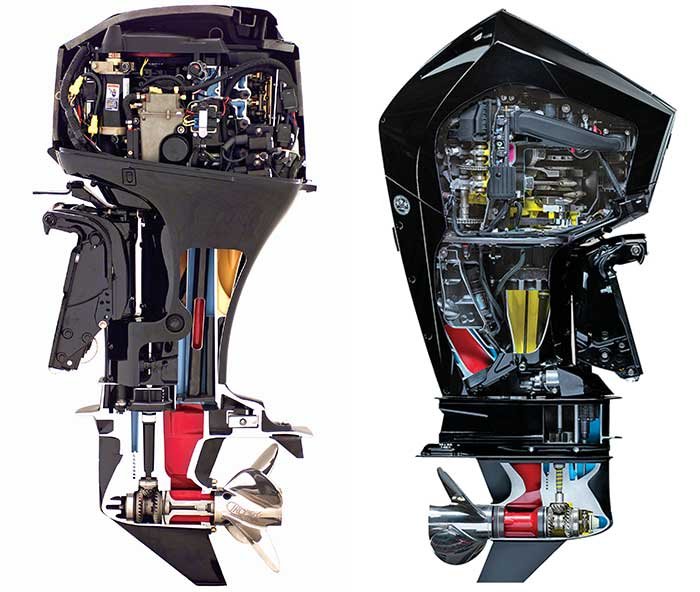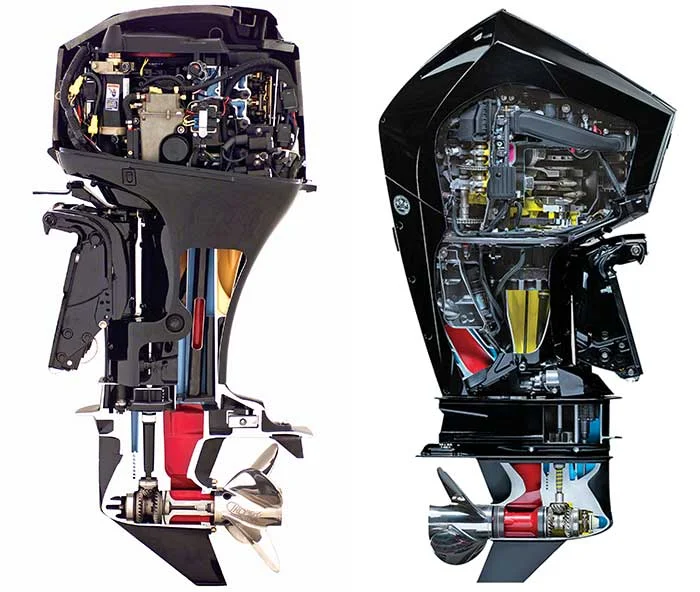Understanding Outboard Motors: A Comprehensive Guide for Boating Enthusiasts
How to Understand Outboard Motors: The Boating Enthusiast’s Complete Guide
Whether you’re a seasoned sailor or a new member of the marine gang, whoever you are, knowledge about outboard motors is the secret to a strong, smooth ride. Outboard motors are your watercraft’s lifeline, determining not just how fast you travel but also how safe and efficient you ride on water.
In this exhaustive guide, we’ll demystify everything you need to know about outboard motors—how they function and how to select one.
Technical specifications and advantages of different types of engines.
And yes, we have a handpicked list of top-rated outboard motors for sale, ready for your sailing pleasure.
Table of Contents
- What Is an Outboard Motor?
- How Do Outboard Motors Work?
- 2-Stroke vs. 4-Stroke Outboards
- Key Specifications to Know
- Choosing the Best Horsepower
- Types of Fuel and Performance
- Desirable Features to Find in Modern Outboards
- Tips on How to Maintain for Long Life
- Outboard Motor Buying Guide
- Why Buy from Us?
- Our Top-Selling Product Lines of Outboard Motors
- Frequently Asked Questions
- Last Words
1. What is an Outboard Motor?
An outboard motor is an independent motor taken onboard on the back (stern) of a vessel. It powers and directs the vessel and is a primary piece of hardware for anything from a little fishing boat to a large recreational boat.
They combine an engine, transmission, and propeller in one package and are easily removed and replaced.
2. How Do Outboard Motors Work?
Outboards work by drawing in air and fuel, igniting the mixture with a spark plug, and using the created combustion to power pistons. This turns the driveshaft and powers the propeller, thrusting the boat ahead or astern, depending on gear.
Major pieces are:
- Engine block
- Lower unit (gear case)
- Propeller
- Steering mechanism
3. 2-Stroke vs. 4-Stroke Outboard Motors
One of the most important decisions when purchasing an outboard motor is whether to have a 2-stroke or a 4-stroke engine.
2-Stroke Outboards:
- Simpler design, lighter build
- More power-to-weight
- More acceleration
- More portable
- Generally noisier and less efficient, traditionally
4-Stroke Outboards:
- Quieter operation
- More efficient
- Less emissions
- Oil changes must be done
- Tend to be heavier, more complex
✅ We offer both 2-stroke and 4-stroke outboards, each with its own specific applications depending on your boating use.
4. Key Specifications to Know
When purchasing an outboard motor, the following are specifications to pay close attention to:
| Specification | What It Is |
|---|---|
| Horsepower (HP) | Describes engine power; more HP = faster speed |
| Shaft Length | Must match your boat’s transom height (short, long, or extra-long) |
| Weight | Affects fuel efficiency and stability |
| Displacement | Engine size in cubic centimeters (cc); will affect torque and acceleration |
| Fuel Type | Mainly gasoline; some electric or hybrid choices |
| Starting System | Manual or electric start available |
| Cooling System | Generally water-cooled for use in the sea |
5. Choosing the Right Horsepower Outboard Motors
Choosing the right horsepower is crucial to effective performance and safety. Underpowered engine, your boat will not move; overpowered, you may destroy your boat or void warranty.
Minimum Horsepower Specifications:
- Small dinghies: 2.5 HP – 15 HP
- Fishing boats: 25 HP – 60 HP
- Pontoon boats: 40 HP – 150 HP
- Ski boats: 150 HP – 300+ HP
🔧 Tip: Never exceed the maximum recommended horsepower on your boat capacity plate or in your manual.
6. Fuel Types and Efficiency
Outboard motors are more fuel-efficient than ever. Most current engines run on unleaded gasoline, but electric and hybrid options are gaining popularity in the market.
Fuel-saving Tips:
- Use 4-stroke engines for longer journeys
- Maintain proper tune on your engine
- Keep your propeller clean and intact
7. Top Features to Look for in Modern Outboards
New outboards are equipped with the works when it comes to convenience, safety, and performance features. Some you might want to put high on your list:
- Digital throttle and shift (DTS)
- Power tilt and trim
- Fuel injection system
- Integrated diagnostics
- GPS integration
- Remote controls
8. Longevity Maintenance Tips
In order that you can get the maximum life out of your outboard motor, just keep in mind the following easy maintenance tips:
- Rinse in fresh water after each use
- Check oil and fuel periodically
- Store in a dry environment
- Replace spark plugs when needed
- Check propeller and gearbox
- Schedule annual professional servicing
✅ We supply maintenance-friendly motors and manuals of maintenance.
9. Outboard Motor Price Guide
Outboard motor prices vary widely based on size, brand, and model. Below is an approximate price guide:
| Horsepower Range | Price Range (USD) |
|---|---|
| 2.5 – 15 HP | $800 – $2,500 |
| 20 – 60 HP | $2,500 – $6,000 |
| 70 – 150 HP | $6,000 – $12,000 |
| 200 – 350+ HP | $13,000 – $25,000+ |
💲 We offer competitive prices on all of our outboard motors and can assist you in choosing the right one for your budget.
10. Why Buy From Us?
At [Your Company Name], we don’t just sell outboard motors—we help you choose the ideal one to fit your lifestyle. Some of the reasons why people like to purchase from us are listed below:
✅ Huge inventory of high-end brands
✅ Expert customer support
✅ Full specifications provided
✅ Warranty offered
✅ Convenient financing available
✅ Nation-wide delivery
11. Our Best-Selling Featured Outboard Motor Models
The following are some of our best-selling models that are presently available (complete specs on product pages):
🛥️ Yamaha 115 HP 4-Stroke Outboard Motor
- Horsepower: 115 HP
- Shaft Length: 20″
- Weight: 377 lbs
- Starting: Electric
- Fuel System: EFI
🛥️ Mercury 60 HP Command Thrust
- Horsepower: 60 HP
- Shaft Length: 20″
- Starting: Electric with manual backup
- Features: SmartCraft DTS, BigFoot Gearcase
🛥️ Suzuki 2.5 HP Portable 4-Stroke
- Horsepower: 2.5 HP
- Shaft Length: 15″
- Weight: 29 lbs
- Fuel Tank: 1.0L built-in
- Suitable for small boats and inflatables
🛥️ Tohatsu 20 HP EFI Outboard
- Horsepower: 20 HP
- Fuel Injection: Yes
- Starting: Electric or manual
- Shaft Length: 15″/20″ options
- Lightweight and compact
🧭 Not sure what to do? Talk to our sales staff for expert advice.
12. Frequently Asked Questions
Q: What outboard motor size should I choose for a 16ft boat?
A: Depends on load and desired use, but 40-60 HP should be adequate on a 16-foot boat.
Q: How long will an outboard motor last?
A: Properly maintained, an outboard motor will easily last between 1,500 and 3,000 hours or more.
Q: Do installation services exist?
A: Yes! Expert installation and setup services exist at some locations.
13. Final Thoughts
It is good to know about outboard motors to make the most educated decision for your boating adventure. For fishing, cruising, or exploring, your engine is an important aspect of performance and enjoyment.
At our shop, we’re excited to offer a wide range of high-performance outboard motors for sale, from lightweight 2.5 HP engines up to heavy-duty 350+ HP motors. Browse our inventory, compare features, and have our staff help you choose the perfect engine for your needs.
🛶 Need a new boat?
📞 Shop online or call us for one-on-one advice!








